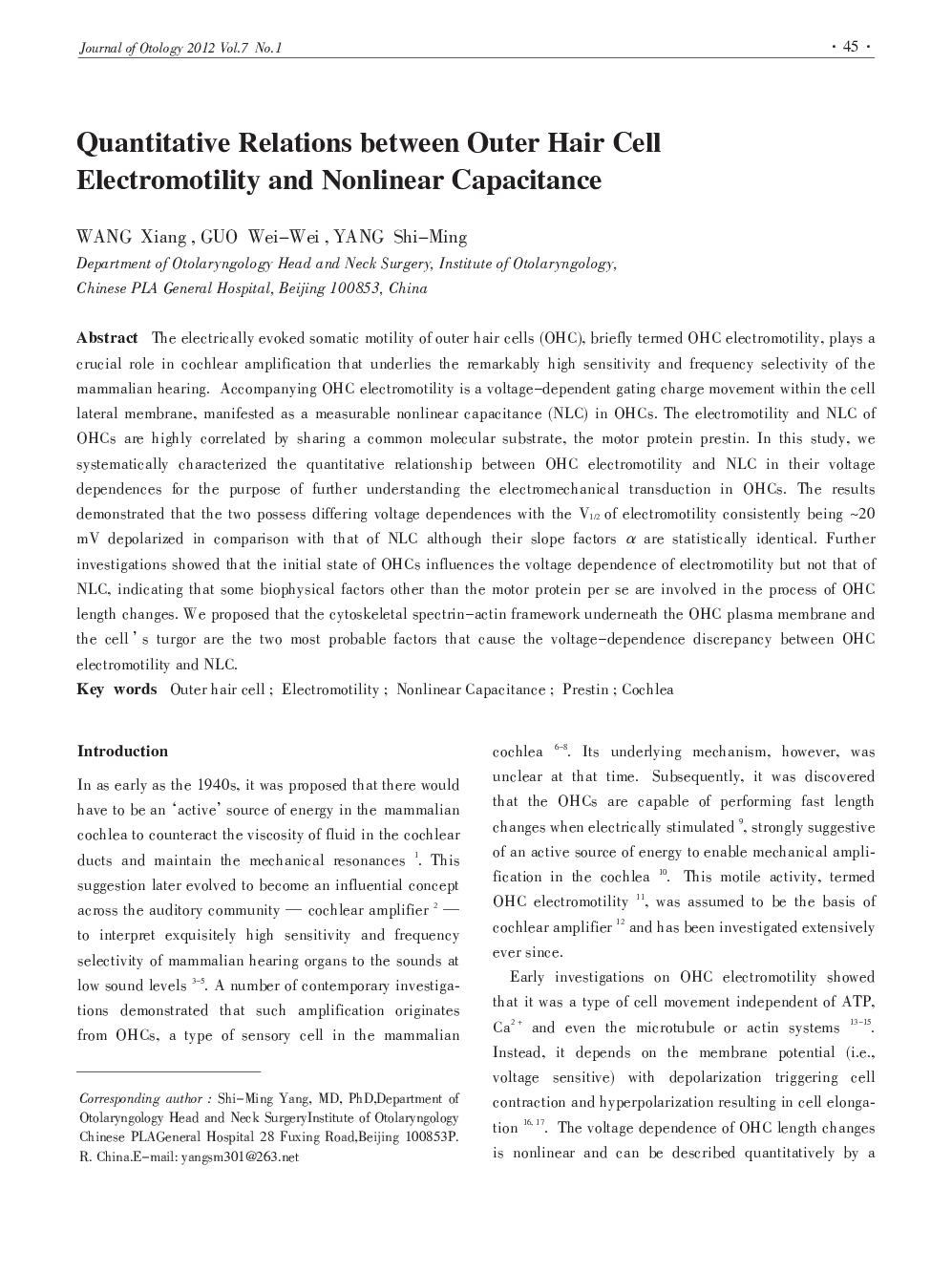| Article ID | Journal | Published Year | Pages | File Type |
|---|---|---|---|---|
| 4116723 | Journal of Otology | 2012 | 9 Pages |
The electrically evoked somatic motility of outer hair cells (OHC), briefly termed OHC electromotility, plays a crucial role in cochlear amplification that underlies the remarkably high sensitivity and frequency selectivity of the mammalian hearing. Accompanying OHC electromotility is a voltage–dependent gating charge movement within the cell lateral membrane, manifested as a measurable nonlinear capacitance (NLC) in OHCs. The electromotility and NLC of OHCs are highly correlated by sharing a common molecular substrate, the motor protein prestin. In this study, we systematically characterized the quantitative relationship between OHC electromotility and NLC in their voltage dependences for the purpose of further understanding the electromechanical transduction in OHCs. The results demonstrated that the two possess differing voltage dependences with the V½ of electromotility consistently being ~20 mV depolarized in comparison with that of NLC although their slope factors α are statistically identical. Further investigations showed that the initial state of OHCs influences the voltage dependence of electromotility but not that of NLC, indicating that some biophysical factors other than the motor protein per se are involved in the process of OHC length changes. We proposed that the cytoskeletal spectrin–actin framework underneath the OHC plasma membrane and the cell’s turgor are the two most probable factors that cause the voltage–dependence discrepancy between OHC electromotility and NLC.
